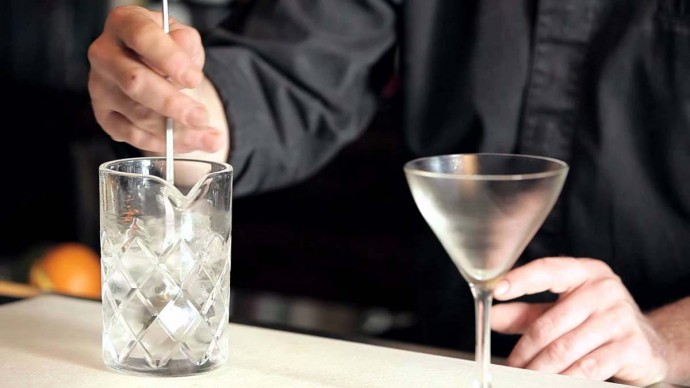When learning how to make craft cocktails at home, it’s good to start simple—and it doesn’t get much simpler than mixing glasses. They’re absolutely central to any stirred cocktail, and despite being pretty basic they can go a long way towards classing up your home bar. Plus, they’re easy to improvise in a pinch, so there’s no need to break the bank with a fancy one.
Why do I need a mixing glass?
Well, as we mentioned above, mixing glasses are primarily used to make stirred cocktails. There are thousands of stirred drinks out there, and they probably (in our completely unscientific estimation) comprise a slight majority of the classics. For cocktails that only include alcoholic ingredients (i.e., no fruit juices, soda, or other mixers of the sort), you’re almost always going to want to stir rather than shake.
Why? Part of it is convention, with a half-century of cranky old bartenders kicking anyone out who asks for their Martini “shaken, not stirred.” But the other reason is practical.
When you shake a drink, little chunks of ice tend to break off, melt, and water it down. With spirit-forward cocktails like Martinis and Manhattans, that sort of defeats the purpose. A Daiquiri, on the other hand (made with white rum, sugar, and lime juice), doesn’t mind a bit of extra water—in fact, it can be useful to take the sour edge off of the lime juice.
Which mixing glass do I get?
If you poke around online, you’re sure to find hundreds of different mixing glasses, ranging anywhere from fifteen bucks to nearly a hundred. We won’t hold it against you if you feel like splurging, but for the most part you’ll be just fine with a mid-range option. Here are a couple of our favorites that run around $30:
Seamless Yarai Mixing Glass, 750ML/25-Ounce ($30) – This is a slightly larger mixing glass than you need for one or two drinks at a time, but if you’re mixing for parties (or just have a bunch of roommates) you’ll be happy to have the extra space to prevent spillage.
Yarai Mixing Glass, 500 ml/17 oz ($33) – If you don’t need such a large glass, though, this one is a beaut. Plus, it’s sturdy as hell.
You don’t need to spend so much if you’re not worried about looks, though. While there’s a good argument that the squared-off shape of a proper mixing glass aids in stirring, for years we just used American pint glasses. They have a thick, heavy bottom, so they tend to stay put, and unlike their traditional British counterparts the thick glass can withstand a good deal of abuse. If you don’t have one lying around your kitchen, we recommend this:
Luminarc 16-Ounce Pub Beer Glasses, Set of 4 ($12) – The beauty of a pint glass is twofold: you can use it as a regular drinking glass when you’re not making cocktails, and it’s a hell of a lot cheaper.
What if I’m broke and can’t afford one?
If you can’t afford to go out and buy a mixing glass at the moment (or your laziness rivals even our own), literally any heavy glass with a thick and relatively square bottom will do. Heavy drinking glasses are okay, but small, Pyrex-style measuring cups are an excellent alternative (the two-cup size is just about ideal).
The weight is probably the most important thing to keep in mind, since stirring a dainty little glass when it’s full of ice and booze runs the risk of a messy (and very disappointing, considering the contents) spill. You also don’t want to use a bowl or anything with too rounded of a bottom, because stirring a cocktail requires that the ice not move around too much. We’ll get into that in another article, but for now, just take our word for it.
Next up, we’ll be tackling an intimately related tool: the barspoon.
Photo: DrinkSkool



